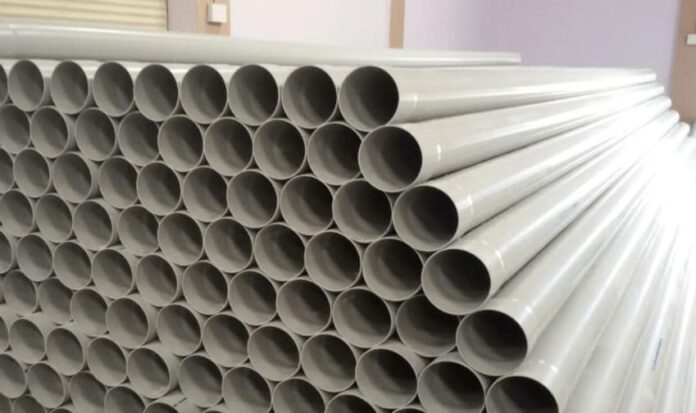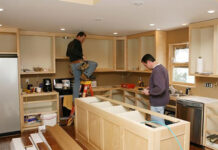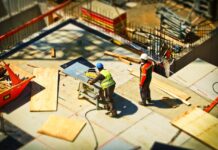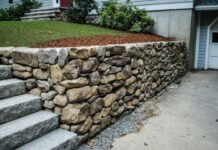Are you a general contractor who has to install polyvinyl chloride (PVC) pipes for a residential project? Perhaps you’re a homeowner who needs to replace old galvanized steel pipes with PVC pipes during a home renovation. Contact Total Pipeline Systems that help to install pvc pipe for your new home.
Whichever situation applies, the best route to take would be to outsource the job to PVC pipe installation professionals. Total Pipeline Systems is one of the good choices that give your drainage a long life.
Yes, PVC pipes are almost indestructible, with a service life estimated between 100 and 300 years. However, this longevity depends on choosing the correct pipes for your usage case and correctly installing the PVC pipes and fittings.
However, just so you can evaluate your PVC pipe installer’s work or just in case you want to do it yourself, here are tips to ensure you’re installing PVC pipes correctly.
- Use an appropriate cutting tool.
Whatever your project, you will probably have to cut your PVC pipes to achieve the required pipe length. Cutting a PVC pipe should be a breeze, but only if you have the right PVC cutting tools.
The best PVC pipe cutting tool is a plastic pipe cutter. No surprise there. A rotating pipe cutter or a ratcheting pipe cutter is specifically designed for cutting plastic pipes, so it produces flawless, precise cuts.
However, a plastic pipe cutter does take a bit of effort to use, so it can be impractical if you need to cut a lot of pipes. Furthermore, plastic pipe cutters have a maximum size of pipe they can cut.
A rotating pipe cutter is typically suitable for pipes with a diameter of up to three-quarters of an inch. Meanwhile, a ratchet pipe cutter can usually cut pipes up to less than two inches in diameter, although some models can cut two-inch (or slightly bigger) pipes.
The handsaw (particularly the hacksaw) is an alternative to plastic pipe cutters when you need to cut many or larger pipes. Unfortunately, a handsaw does not make the cleanest cut.
Finally, if you must cut a substantial number of pipes, it’s best to use a miter saw. This electric power tool can cut through a pipe in no time. Equipped with the right blade, it can make clean and precise cuts.
- Deburr your pipes.
After cutting, remove the rough edges called burrs inside the pipe lip. You can remove them using the appropriate deburring tool.
Deburring your PVC pipes after cutting is essential as leaving them rough will disrupt the flow of the fluid inside your pipes.
Burrs obstruct liquid flow, causing eddies, swirls, or vortices. Through time, the continuous mechanical action of the fluid on a specific section of the pipe (especially if the liquid has particles in it or if you are transporting slurry) can eventually abrade and corrode the PVC.
Burrs can also reduce pipe efficiency. The slight reduction in pipe efficiency in a single pipe joint may be negligible. However, when improperly deburred pipes comprise a complicated and multiple-jointed piping system, the overall performance loss can be significant.
Finally, burrs also cause undue noise. Again, while the noise can be negligible in a single line of pipe, the amount of noise can add up.
- Assemble your pipes and pipe fittings before actual installation.
Before actual gluing and installation, try putting your PVC pipes and pipe fittings together. This will accomplish two things: let you check if you have all the components you need to complete your piping system and see if you need to make adjustments to improve the fit.
Note: During dry assembly, mark your pipes and pipe fittings with a felt-tip pen to indicate correct pipe positioning. This will guide you when it’s time to cement pipes and pipe fittings together.
- Clean and prime the pipe and the inside of the pipe fitting before joining.
Before you join pipes and pipe fittings, make sure they are clear of dust, debris, and any grease that may impede a seamless assembly. Using a dedicated PVC pipe cleaner, clean the outer surface of the pipe and the inside of the fitting.
After cleaning, you must prime the joints. Apply the PVC primer on the pipe’s outside surface and the inside of the pipe fitting. This will soften the PVC, preparing it for the gluing action of the PVC cement.
Note: There are PVC primers designed to clean and prime simultaneously.
- Apply the PVC cement while the primer is wet.
As you know, paint primer must dry before you paint over it. However, when it comes to joining PVC pipes, the PVC primer is effective only when it’s wet.
Therefore, while this may seem counter-intuitive, apply the PVC cement to joints right after you use the PVC primer — i.e., while the primer is still wet.
- Use the right amount of primer and cement.
As mentioned earlier, PVC primer softens the PVC to prepare it for the action of the PVC glue. PVC cement, meanwhile, temporarily dissolves a thin layer of PVC upon application. This layer solidifies again when the pipe and pipe fittings are fused, ensuring a flawless seal.
When joining PVC pipes, you must use the right amount of primer and cement. Too much primer and cement will weaken the pipes. Too little, meanwhile, can lead to leaky joints.
Note: A typical job requires about one half part primer for every part of cement. Therefore, if your job requires two liters of glue, you should prepare around one liter of primer.
- Immediately assemble pipes and pipe fittings after cement application.
After applying PVC cement to your pipe and pipe fitting, you must immediately join them together. To achieve a secure connection, you must join pipes and pipe fittings while the cement is still wet.
Install PVC Pipes With Great Results
When installing PVC pipes, you must remember to use the right cutting tools, deburr your pipes, and correctly assemble your pipes and pipe fittings.
For the best results, designate your PVC installation project to construction professionals. They have the expertise and the experience to ensure that your PVC pipes are installed correctly and your piping system will work as intended.
AUTHOR BIO
Sudheer T R is the Managing Director at Polyfab Plastic Industry LLC, experts in high quality, technologically advanced plastic piping solutions in the UAE. The combination of academic interest, field exposure and market experience of 15 years has given Sudheer the force to harness cutting-edge technologies in today’s most rigorous construction environment.


















